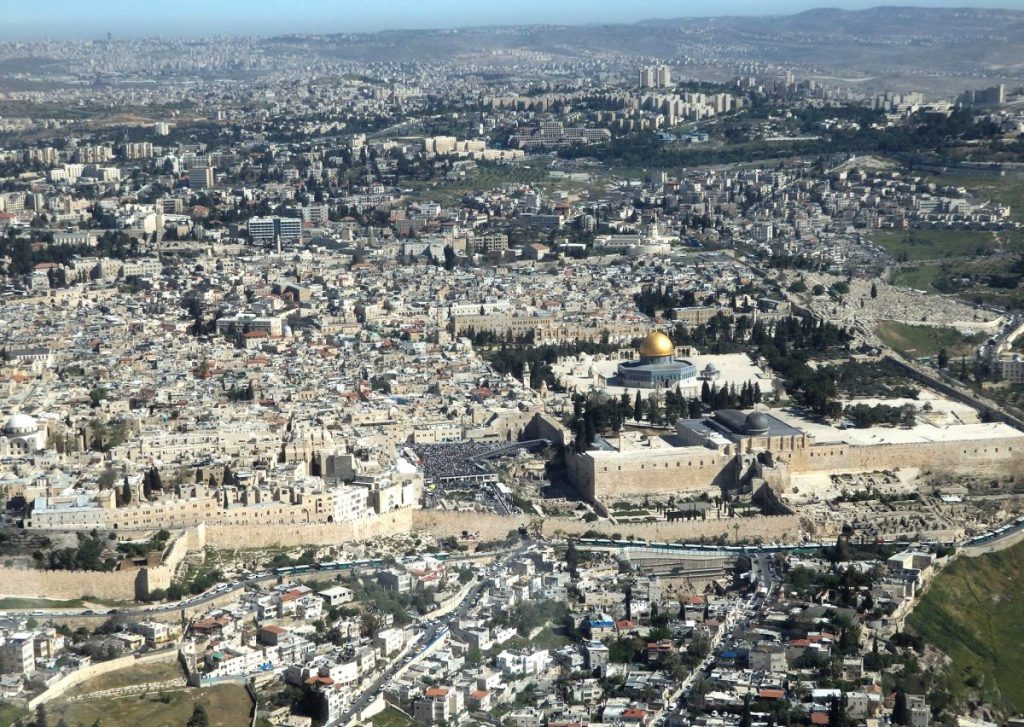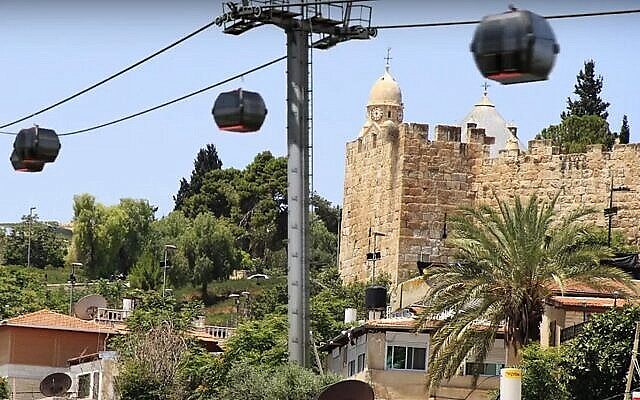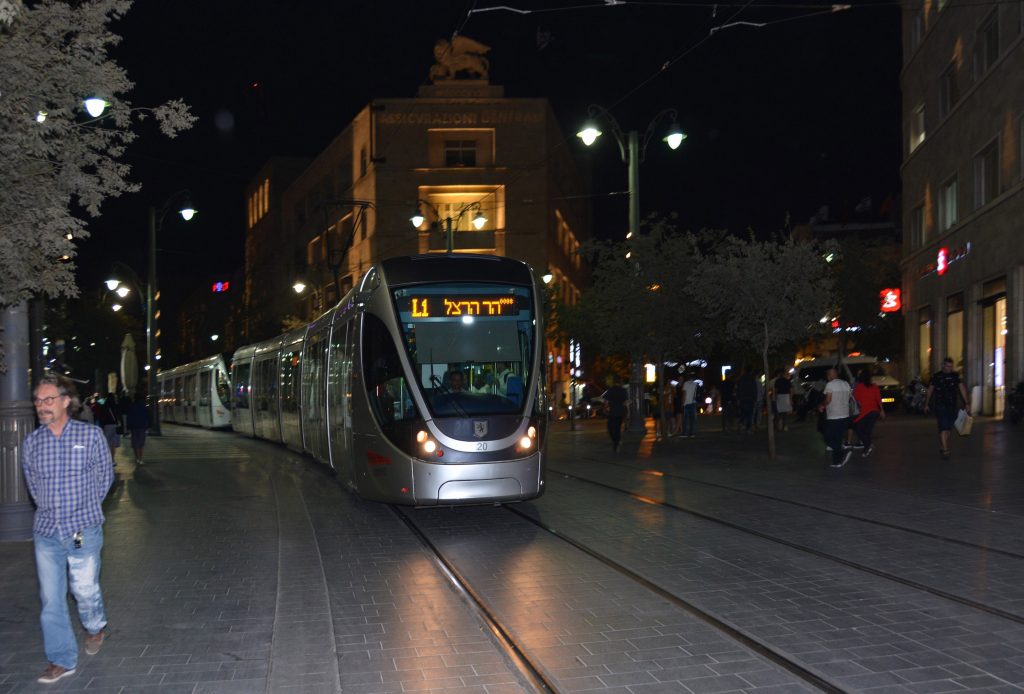Australia/Israel Review
Capital growth
Jun 1, 2022 | Amotz Asa-El

Confident of his solid alliance with Rome, Judea’s King Herod Agrippa (11 BCE – 44 CE) decided to add a vast wall to Jerusalem’s north and east around 42 CE and thus double the area of his magnificent capital.
The need to expand Jerusalem became evident at every Jewish holiday, when the city’s famous temple attracted a tri-continental flood of pilgrims who congested the city’s markets, roads and alleyways.
Works on the ambitious project that would have doubled the city’s area and included 90 watchtowers were under way when the Emperor Claudius learned of the venture and ordered its cancellation, apparently seeing in it a potential threat to Rome’s sway.
The uncompleted wall’s foundations are still visible in various places, all of which are well within today’s municipal Jerusalem, thus demonstrating the difference in size between the city’s ancient and modern maps.
A sprawling metropolis of 126 sq. km., today’s Jerusalem is 50 times the size of what the city would have been like had Herod Agrippa been able to carry out his plan. With 930,000 inhabitants within its municipal borders, and more than a million when counting its periphery, Jerusalem is challenged with transportation problems it has never before faced in its history over more than three millennia.

An artist’s conception of the cable car plan (Image: Twitter)
A Supreme Court ruling on May 15 approved a controversial cable car proposal which reflects Jerusalem’s serious infrastructure challenges, as well as an inventive spirit which inspires mega-projects that seek to transform the holy city – which was once derided by coastal Israelis for its perceived remoteness and provinciality.
The cable-car plan is designed to reduce the pressure affecting the most complex and fraught location in the city’s historic nucleus – the Western Wall.
Attracting more than 10 million annual visitors, the Wall’s 58-metre-long plaza is accessible via one narrow road within the Old City’s walls and another road, not much wider, outside the walls. The ancient walled city, where some 35,000 inhabitants live within one square kilometre, has long been closed to private vehicles, except for a few parking lots that are restricted to use by local residents. Even so, congestion caused by buses shuttling pilgrims to the Wall is unsustainable.
The new project will send many of the Wall’s visitors to a cable car station that will be located opposite Mount Zion, in what was Ottoman-era Jerusalem’s railway station and is now a restaurant and recreation strip.
The cable car’s 1.4 km ride will provide a breathtaking view of the Christian Quarter’s spires, David’s Citadel, the biblical Valley of Hinnom, and the iconic golden Dome of the Rock on the Temple Mount before landing at the Dung Gate, about a two minute walk from the Wall.
It is backed by Jerusalem Mayor Moshe Leon, but the project’s most senior opponent, Israeli Transport Minister Merav Michaeli, argues it will damage Old Jerusalem’s unique skyline and also cause security problems and political tensions. The Supreme Court overruled these arguments, and also those of the city’s community of Karaites (a small, ancient Jewish sect who observe the five books of Moses but not rabbinic law), which is protesting the proposed cable car’s passage above its historic cemetery.
Straddling a cluster of other historic graveyards, from the Protestant cemetery on Mount Zion to the Jewish necropolis on the Mount of Olives and the Muslim tombs along the opposite slope, Jerusalem’s cable car will arguably embody a bold effort to impose modernity on antiquity, while avoiding actual disturbance to those centuries-old burial places.
Time will tell how successful this project will be, but even its supporters do not claim it will solve the city’s arterial problems. The answer to that lies in the highways and railways that climb the Judean mountains from the Mediterranean coast, and in the light railway system developed within the city over recent years.
A major breakthrough on this front happened four years ago, with the inauguration of a fast train from downtown Tel Aviv that reaches Jerusalem’s Yitzhak Navon Station in 38 minutes – as opposed to about an hour by car.
Running every 30 minutes from 6am until midnight, this double-decker train tunnels its way through the Judean Mountains carrying up to 1,000 passengers on each trip. Its clientele for now is made up mainly of the carless population – soldiers, students and ultra-Orthodox families – but this will likely change once a huge parking lot that is being built underneath it opens in some two years’ time.
The aim is to divert thousands of drivers from the highways to the railways, not only for travel to Tel Aviv, but also to Ben Gurion Airport – the only stop on the Tel Aviv-Jerusalem line – as well as the large town of Rishon LeZion south of Tel Aviv via a new line that is planned to start operation in four years.
The public works commotion created by the cable car and fast rail projects is actually relatively small compared with what is happening in Jerusalem due to work on its light rail system.
A decade after it launched Israel’s first city light rail line, a 14 km service that links the capital’s west and north while crossing downtown Jerusalem, the city is now a continuum of busy construction sites. Two new lines are under construction while the existing line is being extended in three directions, to Hadassah Hospital, the Israel Museum, and Jerusalem’s northernmost tip, Neveh Yaakov.

The expanding light rail system transforming transport in Jerusalem (Image: Ashernet)
The existing line is already a success, having cleared buses and private cars from downtown Jerusalem’s main street, Jaffa Road, and turned it into a lively pedestrian mall. By the time the other lines are completed in roughly seven years, thousands of drivers who now clog Jerusalem will hopefully be using public transport for much of their daily travel.
Revolutionary though all this will be in terms of traffic and lifestyle, it will not affect Jerusalem’s character. Something much more likely to transform that character on a significant scale is happening at the city’s main western entrance – a huge real estate project that will redraw Jerusalem’s skyline and hopes to provide a heart transplant for the city’s relatively feeble private economy.
Bordering the new train station, the Jerusalem Convention Centre and the iconic Chords Bridge, this “Jerusalem Gateway” scheme will see the construction of nine skyscrapers up to 40 storeys high, each surrounded by another 15 buildings of up to 12 storeys. All these buildings except one will be non-residential, and are expected to collectively generate 60,000 jobs in hi-tech, finance, hospitality and entertainment.
Jerusalem has suffered from a relatively weak economic base throughout its modern period – living in the shadows of commercial Tel Aviv and industrial Haifa. With government and the Hebrew University its leading employers, and a nightlife which is no match for Tel Aviv’s exuberance, Jerusalem’s successive mayors watched helplessly as secular university graduates migrated to the coast.
The Jerusalem Gateway mega-project that purports to give Jerusalem the kind of economic base it never had before might indeed transform it in other ways – first and foremost visually. A cluster of high-rise structures will in due course greet those approaching the city from Tel Aviv or Ben Gurion Airport.
Deliberately adjacent to the new fast rail station, the Jerusalem Gateway is designed to become an extension to the coastal plain’s commercial bustle and the technology industry’s creativity and wealth. It would all add up to a celebration of worldliness, which would be the opposite of the spiritual other-worldliness that has been Jerusalem’s claim to fame since Isaiah, Jeremiah and Jesus walked its streets.
However, while planners do their best to lead the city to a future of mundanity and wealth, its familiar mixture of religious piety and political strife remains very much an ongoing reality at present.
With the Jewish Passover and Muslim Ramadan overlapping, Palestinian rioters and Israeli police clashed on Temple Mount on April 15, after Palestinians emerging from the Al-Aqsa Mosque hurled rocks at Jews praying by the Western Wall abutting the mosque’s courtyard.
The riots, which continued for some three weeks and broke out in the midst of a series of shooting and knifing attacks outside Jerusalem, resulted in hundreds of arrests.
The new cable car is unlikely to prevent the holy compound’s transformation into a battlefield again in the future. It would, however, be an emblem of the current Sisyphean efforts going on to turn Jerusalem into the normal city it has never before been.






